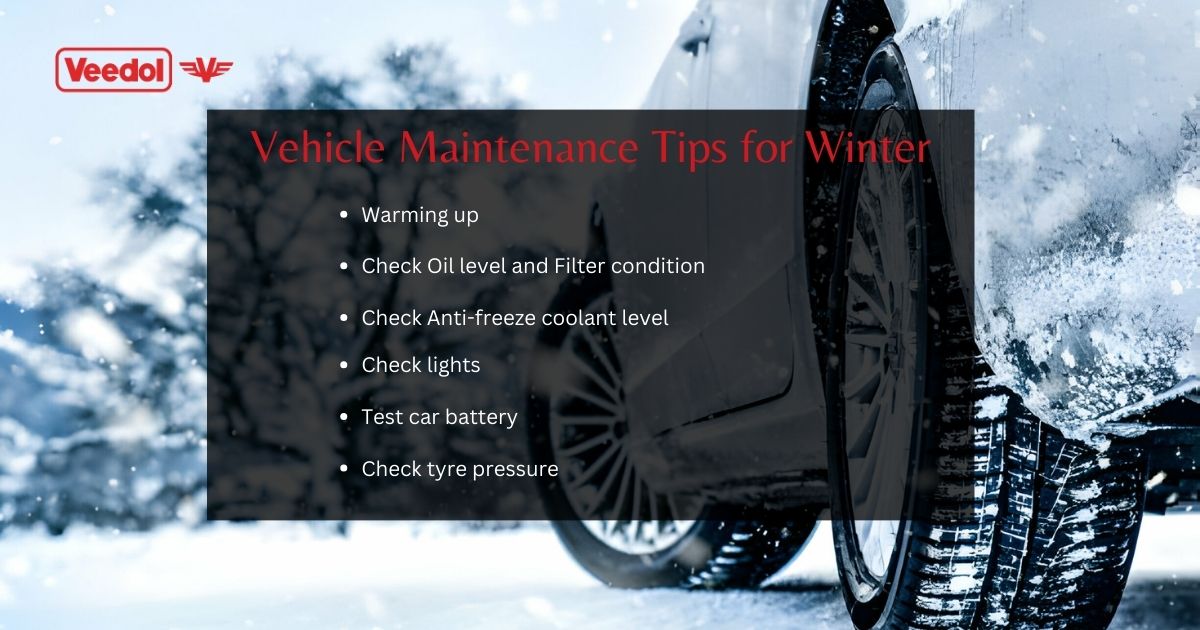Choosing the best engine oil for bikes isn't enough if regular vehicle maintenance tips for winter are not part of your routine checklist. Like our bodies need time to adjust to seasonal changes, our vehicles require routine checkups to keep them going.
Wondering why?
Well, when temperature changes, it brings changes in how our vehicles function. For example, a drop in temperature can freeze fluids inside the vehicle. Again, warm temperatures can cause quick overheating in vehicles.
Regular vehicle usage gradually leads to light wear and tear, impacting performance with time. However, weather conditions exposed to your vehicle can cause mechanical issues that you need to prevent.
Why seasonal maintenance is important for vehicles
Here are reasons why regular vehicle maintenance can help extend the life of your investment:
a) Extended longevity
Seasonal maintenance helps you extend the shelf life of your investment and maximize usage capacity even with drastic weather changes. Maintenance exposes minimal wear and tear that can be fixed to extend the vehicle's longevity. Not doing so might lead to temporary damage in one area, gradually impacting other components to wear faster than usual. Simply put, regular maintenance is a preventive step that keeps your vehicle's health in check.
b) Prevents large expenditure
Maintaining a vehicle at regular intervals ensures that your assets depreciate slowly. You safeguard yourself from massive damage and expenditure after a long time because you fix minor issues throughout the year. A well-maintained vehicle runs efficiently, uses fuel optimally, and requires fewer replacements.
c) Safety
With regular usage, there are safety concerns you cannot ignore as a vehicle owner. Seasonal maintenance helps you address those problem areas that can keep you and riders around you safe. For example, checking tyre condition with every oil change and ensuring complete engine examination to confirm smooth functionality are conditions to address with each routine.
Essential Vehicle Maintenance Tips for Winter
Here are some vehicular aspects that require your attention during winter:

1. Warming up
Warming up your car for 3 to 5 minutes is a crucial part of vehicle maintenance tips for winter, ensuring that oil reaches every part of the engine before you start driving.
2. Check Oil level and Filter condition
Consider using a correct multi-grade oil for easier cold starts. Ensure that the oil level is within the recommended range on the dipstick. Low oil levels can lead to increased engine wear, especially in cold weather. Change the oil filter during each oil change. A clogged or dirty oil filter can restrict oil flow, leading to poor engine performance.
3. Check Anti-freeze coolant level
Ensure that your engine coolant is at the right level and has the correct antifreeze concentration.
4. Check lights
Ensure all lights are working correctly, including headlights, brake lights, fog lights and turn signals.
5. Test car battery
With a temperature drop, a vehicle battery loses its original strength. This is also the reason why vehicles take time to start during colder weather. If the battery requires replacement, the engine might not start. Prompt inspection is necessary during seasonal vehicle maintenance to ensure the vehicle does not stop working.
6. Check tyre pressure
Tyre pressure should be maintained during winter months to maintain vehicular performance. The pressure naturally reduces during cold temperatures as air contracts during cold. Keep a check on under-inflated tyres to refill them quickly to prevent damage. Winter roads are slippery and driving with worn-out tyres can lead to fatality.
What happens to vehicles during winters
Cold weather impacts how your engine oil for a bike or car retains the ability to lubricate and maintain engine quality. Here is what happens and why maintenance becomes necessary:
i) Viscosity
Cold weather makes conventional engine oils thicker, refraining them from reaching difficult parts in the engine. Reaching high-friction areas in a vehicle takes more time and enhances the possibility of damage.Now, synthetic oils have improved viscosity that helps create less friction with the engine. It retains seamless flow, helping you drive through hard snow-covered terrains.
ii) Varnish accumulation
A varnish coating can build up inside the engine using traditional engine oils during winter. The layer of varnish disrupts the oil's natural lubrication and causes quicker engine to wear out.Thickening of oil due to weather and varnish can lead to poor starting. In worst cases, your engine might not run and require external help to start it again.
iii) Sludge accumulation
While conventional oils gradually become greasy and accumulate sludge, the pattern quantifies during winters. It clogs your vehicular engine by restricting seamless flow.
Opting for quality synthetic engine oil for bikes prevents sludge formation inside engines. Synthetic engine oils have no molecular buildup and do not create sludge inside the engine, irrespective of the season.
iv) Oil freezing
Conventional engine oils can freeze during extreme cold as they are naturally sourced and processed. Synthetic oils produced in laboratories are created with climatic conditions in mind to prevent oil freezing. These oils have low pour points, making them flow smoothly during colder weather and protecting engine health.
Best synthetic oils for winters
Following these vehicle maintenance tips for winter will ensure your vehicle runs smoothly during harsh climatic conditions. Veedol offers quality synthetic oil with different grades categorised for different types of engines across two-wheeler and four-wheeler vehicles.

